Online Class: Understanding Learning Styles and Preferences

no certificate
with CEU Certificate*
-
15Lessons
-
22Exams &
Assignments -
7Hours
average time -
0.7CEUs
Course Description
Are you ready to harness the full power of your mind and revolutionize the way you learn? Welcome to "Understanding Learning Styles and Preferences," a transformative course that transcends traditional education and opens the gateway to personalized learning potentials. Here, you will embark on a journey that redefines your approach to acquiring knowledge, arms you with the tools to learn more effectively, and ignites a newfound passion for lifelong learning. This course is not just an academic pursuit�it is a catalyst for personal and professional growth, setting you on a path to unlock your true potential.
Imagine an educational experience tailored just for you, where understanding your unique learning style propels you toward success. This course lets you discover the richness of diverse learning modalities�from visual to auditory, kinesthetic to reading/writing�equipping you to absorb information in ways that resonate deeply with your individual strengths. It's a personalized odyssey that promises to transform abstract concepts into vivid experiences, enhance comprehension, and ultimately, boost retention. By enrolling, you join a community of curious minds, driven by a common goal: to master their learning journey in a dynamic, supportive environment.
Throughout this course, you'll explore the fascinating evolution of learning styles theory, from historical roots laid down by pioneers like Jung and Kolb to the contemporary integration of neuroscience insights and the multiple intelligences framework. Each module delves deep into how these groundbreaking ideas impact modern education, offering you a robust understanding of why personalized learning is the key to engagement and success.
Visual learners will uncover new ways to harness digital tools and visual aids, transforming the way they structure and recall information. Auditory learners will learn to thrive in discussion-rich environments, enhancing their verbal problem-solving abilities. Kinesthetic learners will discover the power of movement in learning, internalizing concepts through hands-on activities that also foster creativity and problem-solving skills. Meanwhile, reading/writing aficionados will engage with complex ideas through strategic content curation, supported by adaptive technologies for a more enriched learning experience.
But this course is about more than just identifying your learning style�it's about empowering you to apply this knowledge in real-world contexts. Whether you are a teacher aspiring to engage more effectively with your students, a professional seeking to improve your skill set, or a lifelong learner eager to understand how you learn best, this course provides the insights and strategies necessary to adapt and thrive in any educational or professional environment.
Moreover, "Understanding Learning Styles and Preferences" uniquely addresses the influence of cultural dimensions on educational methods, acknowledging how societal values shape learning experiences. This exploration equips you with a broader perspective, fostering inclusivity and empathy in your interactions and collaborations.
Your journey is supported by the latest educational technologies that cater to diverse learning preferences, enhancing accessibility and engagement. By embracing these innovations, you'll bridge learning gaps and ensure a comprehensive understanding of the content that matters most to you. Assistive tools such as mind mapping and text-to-speech software transform learning into a multisensory adventure, opening doors for all learners, including those with disabilities, to gain greater access to knowledge.
At course completion, you'll hold more than just newfound knowledge�you'll possess a metamorphic understanding of yourself and your learning capabilities, armed with practical strategies to excel in any field you desire. In the hyper-competitive landscape of today's education and job markets, this course offers you the advantage of adaptability, confidence, and the mastery of learning on your terms.
Seize this opportunity to revolutionize your educational journey. Enroll in "Understanding Learning Styles and Preferences" today, and step into a future where your learning preferences are not just understood but celebrated. Create, communicate, and collaborate with unwavering confidence�your personal and professional growth awaits, and it begins with the decision to choose a course that's truly tailored to what matters most: you.
- Completely Online
- Self-Paced
- 6 Months to Complete
- 24/7 Availability
- Start Anytime
- PC & Mac Compatible
- Android & iOS Friendly
- Accredited CEUs

Course Lessons
Beyond One Size Fits All: Tailored Educational Strategies
 Review Practice Worksheet: Lesson-1-Downloadable-14781.pdf
Review Practice Worksheet: Lesson-1-Downloadable-14781.pdf Lesson discussions: Reasons for Taking this Course
Lesson discussions: Reasons for Taking this Course Complete: Lesson 1 Activity
Complete: Lesson 1 Activity Assessment: Lesson 1 Review Exam
Assessment: Lesson 1 Review Exam
The Evolutionary Path of Learning Styles: From Historical Roots to Modern Applications
 Review Practice Worksheet: Lesson-2-WordSearch-14784.pdf
Review Practice Worksheet: Lesson-2-WordSearch-14784.pdf Complete: Lesson 2 Activity
Complete: Lesson 2 Activity Assessment: Lesson 2 Review Exam
Assessment: Lesson 2 Review Exam
Picture Perfect: The Impact of Visual Learning on Academic Success
 Review Practice Worksheet: Lesson-3-WordSearch-14788.pdf
Review Practice Worksheet: Lesson-3-WordSearch-14788.pdf Complete: Lesson 3 Activity
Complete: Lesson 3 Activity Assessment: Lesson 3 Review Exam
Assessment: Lesson 3 Review Exam
Listening for Success: The Auditory Learning Advantage
 Review Practice Worksheet: Lesson-4-WorkSheet-14790.pdf
Review Practice Worksheet: Lesson-4-WorkSheet-14790.pdf Assessment: Lesson 4 Review Exam
Assessment: Lesson 4 Review Exam
Movement: The Catalyst for Cognitive Development
 Review Practice Worksheet: Lesson-5-Activity-14792.pdf
Review Practice Worksheet: Lesson-5-Activity-14792.pdf Complete: Lesson 5 Activity
Complete: Lesson 5 Activity Assessment: Lesson 5 Review Exam
Assessment: Lesson 5 Review Exam
VARK and Beyond: Understanding Reading/Writing Learners
 Review Practice Worksheet: Lesson-6-WordSearch-14796.pdf
Review Practice Worksheet: Lesson-6-WordSearch-14796.pdf Complete: Lesson 6 Activity
Complete: Lesson 6 Activity Assessment: Lesson 6 Review Exam
Assessment: Lesson 6 Review Exam
Harnessing the Full Spectrum of Learning Styles
 Review Practice Worksheet: Lesson-7-Activity-14799.pdf
Review Practice Worksheet: Lesson-7-Activity-14799.pdf Complete: Lesson 7 Activity
Complete: Lesson 7 Activity Assessment: Lesson 7 Review Exam
Assessment: Lesson 7 Review Exam
Learning Styles Simplified
 Review Practice Worksheet: Lesson-8-HomeWork-14803.pdf
Review Practice Worksheet: Lesson-8-HomeWork-14803.pdf Complete: Lesson 8 Activity
Complete: Lesson 8 Activity Assessment: Lesson 8 Review Exam
Assessment: Lesson 8 Review Exam
Discovering Your Unique Learning Style: A Journey Toward Personal Growth
 Review Practice Worksheet: Lesson-9-HomeWork-14806.pdf
Review Practice Worksheet: Lesson-9-HomeWork-14806.pdf Assessment: Lesson 9 Review Exam
Assessment: Lesson 9 Review Exam
Unlocking Potential Through the VARK and Multiple Intelligences Frameworks
 Review Practice Worksheet: Lesson-10-Downloadable-14810.pdf
Review Practice Worksheet: Lesson-10-Downloadable-14810.pdf Assessment: Lesson 10 Review Exam
Assessment: Lesson 10 Review Exam
Unpacking Cultural Dimensions: A Deep Dive into Educational Influences
 Review Practice Worksheet: Lesson-11-Downloadable-14813.pdf
Review Practice Worksheet: Lesson-11-Downloadable-14813.pdf Assessment: Lesson 11 Review Exam
Assessment: Lesson 11 Review Exam
Harnessing Digital Tools to Cater to Diverse Learning Styles
 Review Practice Worksheet: Lesson-12-WordSearch-14818.pdf
Review Practice Worksheet: Lesson-12-WordSearch-14818.pdf Assessment: Lesson 12 Review Exam
Assessment: Lesson 12 Review Exam
Learning Styles: A Journey Through Time
 Review Practice Worksheet: Lesson-13-WorkSheet-14821.pdf
Review Practice Worksheet: Lesson-13-WorkSheet-14821.pdf Assessment: Lesson 13 Review Exam
Assessment: Lesson 13 Review Exam
Unlocking Success: Adapting Education to Individual Learning Styles
 Review Practice Worksheet: Lesson-14-HomeWork-14825.pdf
Review Practice Worksheet: Lesson-14-HomeWork-14825.pdf Assessment: Lesson 14 Review Exam
Assessment: Lesson 14 Review Exam
Rethinking Learning with Technology
 Review Practice Worksheet: Lesson-15-WordSearch-14829.pdf
Review Practice Worksheet: Lesson-15-WordSearch-14829.pdf Lesson discussions: End of Course Poll; Course Comments
Lesson discussions: End of Course Poll; Course Comments Assessment: Lesson 15 Review Exam
Assessment: Lesson 15 Review Exam
Learning Outcomes
- Analyze the impact of flexible teaching methods that cater to multiple learning styles on student motivation and academic achievement.
- Define the eight types of intelligences proposed by Howard Gardner and give examples of how each can be applied in an educational setting.
- Demonstrate the ability to create and implement a lesson plan incorporating varied learning styles to promote inclusivity and effectiveness.
- Evaluate the effectiveness of educational technologies in addressing diverse learning preferences and enhancing the learning experience for students with different intelligence types.
- Identify and differentiate between the VAK and VARK learning models, describing how each sensory mode can influence teaching strategies and student engagement.
- Identify the key contributors to learning style theories and describe their impact on educational practices using specific examples.
- Recognize and explain the main differences between various learning styles models, such as VAK and Multiple Intelligences, and how they inform adaptive teaching strategies.
- Demonstrate the ability to apply specific visual strategies, such as creating mind maps or using color-coded notes, to organize information effectively and improve comprehension.
- Describe how visual learning techniques can enhance memory retention by utilizing visual aids like diagrams and charts in complex subjects like chemistry or history.
- Define the key characteristics and preferences of auditory learners through examples of effective auditory learning environments.
- Demonstrate the application of strategies that enhance educational experiences for auditory learners by crafting audio-centric study plans.
- Define the characteristics of kinesthetic learners by analyzing their preferred learning styles and environments, focusing on movement and hands-on activities.
- Demonstrate how incorporating kinesthetic learning strategies in different subjects, such as geometry and biology, enhances comprehension and retention through practical application and physical interaction.
- Demonstrate mastery of lesson content at levels of 70% or higher.
Additional Course Information

- Document Your Lifelong Learning Achievements
- Earn an Official Certificate Documenting Course Hours and CEUs
- Verify Your Certificate with a Unique Serial Number Online
- View and Share Your Certificate Online or Download/Print as PDF
- Display Your Certificate on Your Resume and Promote Your Achievements Using Social Media

Choose Your Subscription Plan
No Certificate / No CEUs
This course only
| Includes certificate | X |
| Includes CEUs | X |
| Self-paced |

|
| Instructor support |

|
| Time to complete | 6 months |
| No. of courses | 1 course |
Certificate & CEUs
This course only
| Includes certificate |

|
| Includes CEUs |

|
| Self-paced |

|
| Instructor support |

|
| Time to complete | 6 months |
| No. of courses | 1 course |
Certificates & CEUs
Includes all 600+ courses
| Includes certificate |

|
| Includes CEUs |

|
| Self-paced |

|
| Instructor support |

|
| Time to complete | 12 Months |
| No. of courses | 600+ |
Certificates & CEUs
Includes all 600+ courses
| Includes certificate |

|
| Includes CEUs |

|
| Self-paced |

|
| Instructor support |

|
| Time to complete | 24 Months |
| No. of courses | 600+ |
Related Courses
-
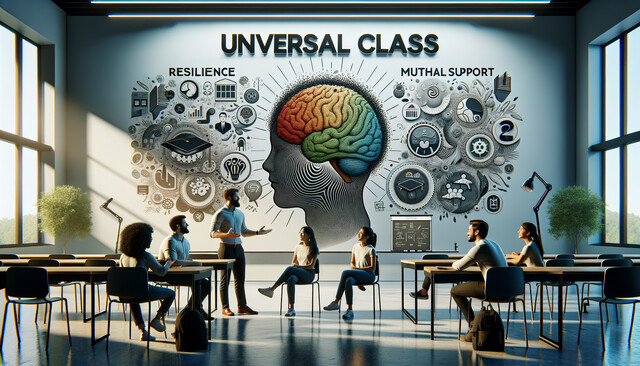 4 hours
0.4 CEUs
Facilitating Online and Hybrid Learning
+ More Info
4 hours
0.4 CEUs
Facilitating Online and Hybrid Learning
+ More Info
-
 3 hours
0.3 CEUs
Effective Teaching Strategies for Diverse Classrooms
+ More Info
3 hours
0.3 CEUs
Effective Teaching Strategies for Diverse Classrooms
+ More Info
-
 5 hours
0.5 CEUs
Implementing Evidence-Based Practices
+ More Info
5 hours
0.5 CEUs
Implementing Evidence-Based Practices
+ More Info
-
 4 hours
0.4 CEUs
Enhancing Student Engagement and Motivation
+ More Info
4 hours
0.4 CEUs
Enhancing Student Engagement and Motivation
+ More Info
-
 4 hours
0.4 CEUs
Implementing Project-Based Learning
+ More Info
4 hours
0.4 CEUs
Implementing Project-Based Learning
+ More Info
-
 5 hours
0.5 CEUs
Inquiry-Based Learning Strategies
+ More Info
5 hours
0.5 CEUs
Inquiry-Based Learning Strategies
+ More Info
-
 7 hours
0.7 CEUs
Integrating Technology in Education
+ More Info
7 hours
0.7 CEUs
Integrating Technology in Education
+ More Info
-
 5 hours
0.5 CEUs
Implementing School-Wide Literacy Programs
+ More Info
5 hours
0.5 CEUs
Implementing School-Wide Literacy Programs
+ More Info
-
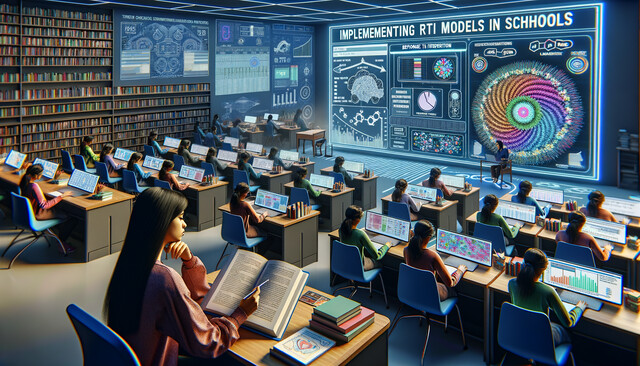 5 hours
0.5 CEUs
Mentoring and Coaching New Teachers
+ More Info
5 hours
0.5 CEUs
Mentoring and Coaching New Teachers
+ More Info
-
 6 hours
0.6 CEUs
Supporting Students with Special Needs
+ More Info
6 hours
0.6 CEUs
Supporting Students with Special Needs
+ More Info
-
 7 hours
0.7 CEUs
Introduction to Instructional Design
+ More Info
7 hours
0.7 CEUs
Introduction to Instructional Design
+ More Info
-
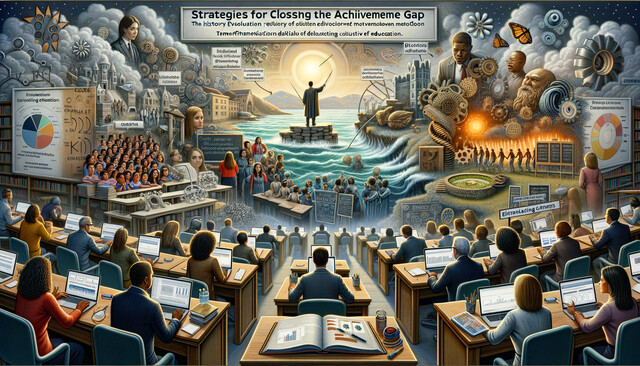 4 hours
0.4 CEUs
Developing Emotional Intelligence in Educators
+ More Info
4 hours
0.4 CEUs
Developing Emotional Intelligence in Educators
+ More Info
-
 5 hours
0.5 CEUs
Building Inclusive Classrooms
+ More Info
5 hours
0.5 CEUs
Building Inclusive Classrooms
+ More Info
-
 7 hours
0.7 CEUs
Aligning Curriculum with State Standards
+ More Info
7 hours
0.7 CEUs
Aligning Curriculum with State Standards
+ More Info
-
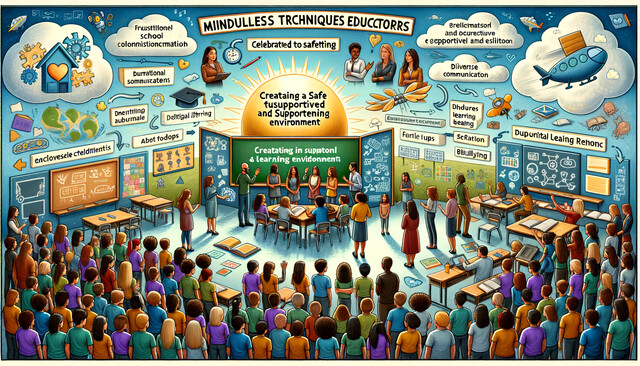 5 hours
0.5 CEUs
Mindfulness Techniques for Educators
+ More Info
5 hours
0.5 CEUs
Mindfulness Techniques for Educators
+ More Info
-
 5 hours
0.5 CEUs
Empowering Student Voice through Leadership
+ More Info
5 hours
0.5 CEUs
Empowering Student Voice through Leadership
+ More Info
-
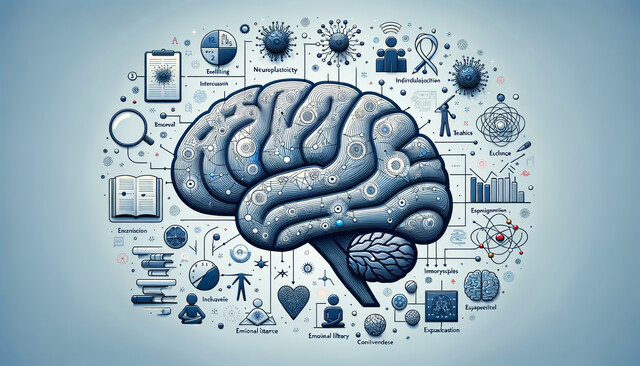 5 hours
0.5 CEUs
Understanding Educational Neuroscience
+ More Info
5 hours
0.5 CEUs
Understanding Educational Neuroscience
+ More Info
-
 5 hours
0.5 CEUs
Developing Critical Thinking Skills
+ More Info
5 hours
0.5 CEUs
Developing Critical Thinking Skills
+ More Info
-
 3 hours
0.3 CEUs
Preparing Students for Careers of the Future
+ More Info
3 hours
0.3 CEUs
Preparing Students for Careers of the Future
+ More Info
-
 7 hours
0.7 CEUs
Ethical Decision-Making for Educators
+ More Info
7 hours
0.7 CEUs
Ethical Decision-Making for Educators
+ More Info
-
 4 hours
0.4 CEUs
The Use of Analytics in Education
+ More Info
4 hours
0.4 CEUs
The Use of Analytics in Education
+ More Info
-
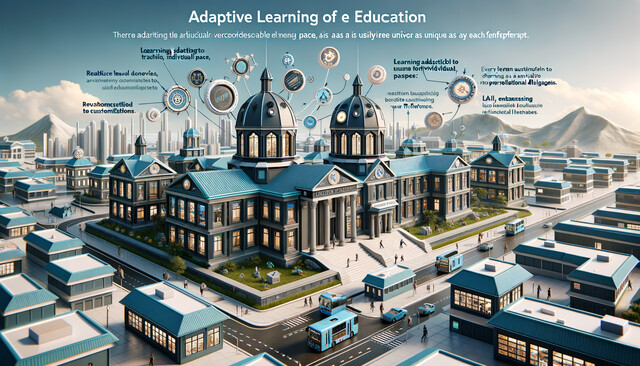 6 hours
0.6 CEUs
Adaptive Learning Technologies
+ More Info
6 hours
0.6 CEUs
Adaptive Learning Technologies
+ More Info
-
 5 hours
0.5 CEUs
Utilizing Data to Drive Instruction
+ More Info
5 hours
0.5 CEUs
Utilizing Data to Drive Instruction
+ More Info
-
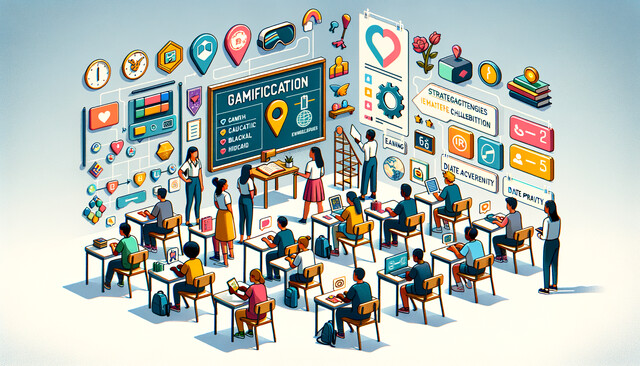 4 hours
0.4 CEUs
Gamification in Education
+ More Info
4 hours
0.4 CEUs
Gamification in Education
+ More Info
-
 3 hours
0.3 CEUs
Education Policy and Reform: Impact and Implications
+ More Info
3 hours
0.3 CEUs
Education Policy and Reform: Impact and Implications
+ More Info
-
 6 hours
0.6 CEUs
Assessment and Evaluation in Education
+ More Info
6 hours
0.6 CEUs
Assessment and Evaluation in Education
+ More Info
-
 5 hours
0.5 CEUs
STEAM: Integrating the Arts with STEM
+ More Info
5 hours
0.5 CEUs
STEAM: Integrating the Arts with STEM
+ More Info
-
 3 hours
0.3 CEUs
Building Resilience in Students
+ More Info
3 hours
0.3 CEUs
Building Resilience in Students
+ More Info
-
 6 hours
0.6 CEUs
Social and Emotional Learning: Programs and Practices
+ More Info
6 hours
0.6 CEUs
Social and Emotional Learning: Programs and Practices
+ More Info
-
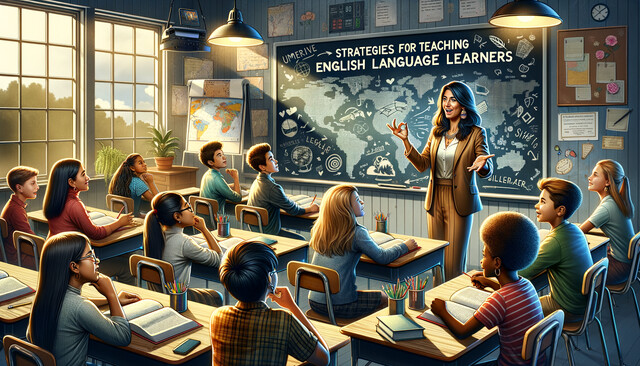 4 hours
0.4 CEUs
Strategies for Teaching English Language Learners
+ More Info
4 hours
0.4 CEUs
Strategies for Teaching English Language Learners
+ More Info
-
 6 hours
0.6 CEUs
Classroom Management for New Teachers
+ More Info
6 hours
0.6 CEUs
Classroom Management for New Teachers
+ More Info
-
 3 hours
0.3 CEUs
Designing STEM Curriculum
+ More Info
3 hours
0.3 CEUs
Designing STEM Curriculum
+ More Info
-
 3 hours
0.3 CEUs
Effective Literacy Instruction in Early Education
+ More Info
3 hours
0.3 CEUs
Effective Literacy Instruction in Early Education
+ More Info
-
 4 hours
0.4 CEUs
Creating a Culture of Collaboration
+ More Info
4 hours
0.4 CEUs
Creating a Culture of Collaboration
+ More Info
-
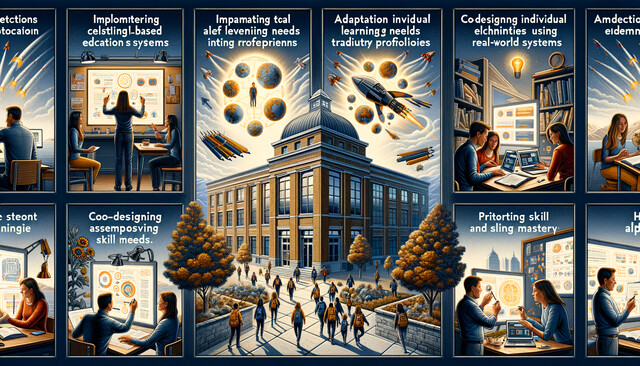 4 hours
0.4 CEUs
Implementing Competency-Based Education Systems
+ More Info
4 hours
0.4 CEUs
Implementing Competency-Based Education Systems
+ More Info
-
 4 hours
0.4 CEUs
Global Competence in a Changing World
+ More Info
4 hours
0.4 CEUs
Global Competence in a Changing World
+ More Info
-
 4 hours
0.4 CEUs
Educational Equity and Justice
+ More Info
4 hours
0.4 CEUs
Educational Equity and Justice
+ More Info
-
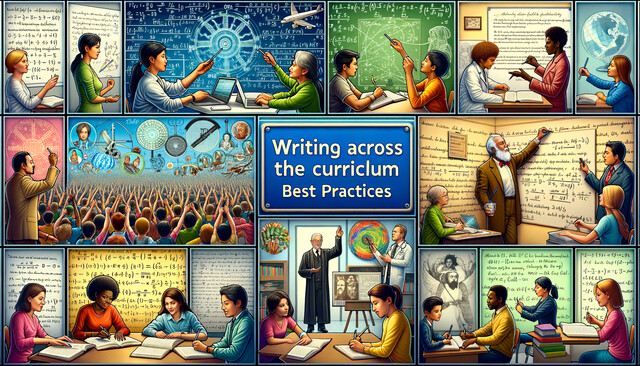 3 hours
0.3 CEUs
Writing Across the Curriculum: Best Practices
+ More Info
3 hours
0.3 CEUs
Writing Across the Curriculum: Best Practices
+ More Info




